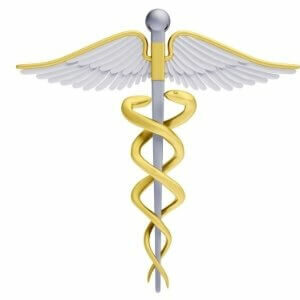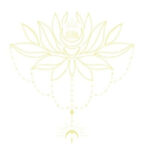This post was originally published on 26/11/2011 and updated on 18/12/2020.
Life is pretty challenging at the moment and we all need more balance in our lives. This Pranayama practice gives you that.
Pranayama – the yogic science of breathing and energy direction.
The Nadis
The benefits of alternate nostril breathing:
Purifies the blood.
As the blood becomes less toxic the lungs and heart don’t need to work as hard.
- Balances the left and right hemispheres of the brain.
Improves concentration
Reduces stress, worries and anxiety.
Relieves all Doshas especially Pitta
Blockages along the Nadis are cleared creating a more balanced, harmonious and happier you.
Our ability to meditate is enhanced allowing us to reach a deeper level of spiritual awareness and understanding.
Improves sleep
Grounding
Precautions:
High blood pressure (If you do have HBP you can do this as long as you don’t hold your breath at any stage.
Low blood pressure (can practice with retention only)
Heart problems
Possible side effects
As the Nadis are cleared blockages will be released and they could surface in ways that you may not expect.
Be prepared for emotional releases and if needed seek professional help or advice. Find a treatment and practitioner to help you deal with issues that come up. And remember they have come up to be cleared so don’t ignore them or push them back down.
Constipation
Reduction in urine
Itching, tingling
Feeling hot or cold
Felling light or heavy
Usually temporary as your body adjusts to the practice and toxins are expelled. However, if they are persistent then seek advice
Mudras
So before we look at the two techniques, we need to look at what you’re going to do with your hands. You use your hands to block and unblock your nostril. The way you do it is called a Mudra.
We’re going t look at the two main ones – mrgi mudra and nasagra mudra.
There seem to be two schools of thought about which mudra to use for this practice. My pranayama teacher and the teachers at the meditation centre I go to teach us to use mrgi mudra while most books and yoga schools use nasagra mudra.
So as variety is the spice of life I will give you both and then you have the option to choose the one that feels right for you.
I use the Murgi Mudra as it does not touch the Anjna Chakra and I want the energy to flow. Play around with them and see what you think.
Nasgra mudra

Use your right hand and put your index and middle finger on the point between the eyebrows. Place your thumb beside the right nostril and the ring and little finger beside the left nostril.
Mrgi mudra

Extend your right hand and curl the index and middle finger towards the palm and place them on the fatty area at the bottom of your thumb.
Place your thumb beside the right nostril and the ring and little finger beside the left nostril.
Whichever Mudra you use just remember this simple rule. Always use your right hand and always start and finish with your left nostril.
Here are some key points to keep in mind
- Don’t force the breath. The breath should be relaxed and gentle.
Be fully aware and present. If your mind wanders bring it back to the beath, back to the count.
Take it slowly. Don’t move on to a more advanced practice until you are completely comfortable with the practice you are doing. It’s not a race.
Spend about 2-4 weeks on the first technique before you move on.
Listen to your body
Focus on the journey, not the destination!
Over time you will notice the effects of the practice on your mind and your body.
Nadi Shodhana should be practised after your asana practice on an empty stomach. It’s best done in the early morning. But if you can’t fit it into your morning routine then choose a time at least 30 minutes after you have eaten if possible.
The first technique
The preparatory practice.
Basically what you’re going to do is breathe in and out for 5 breaths through the left nostril 5 times then the right nostril 5 times.
- Place your left hand on your left knee palm up and open or you can use a hand mudra if you know one.
- Use the thumb to gently block the right nostril and breath in and out through the left nostril 5 times. Do not force the breath but just breathe naturally.
- After the 5 breath release the thumb and use the ring finger to block the right nostril.
- Breathe naturally through the right nostril 5 times.
- Lower your hand and breathe normally through both nostrils 5 times.
This is one round.
Do 5 rounds for 15 – 30 days then go on to the next technique.
The second technique – alternate nostril breathing

Now you are going to alternate between the nostrils. What a surprise!
So basically you breathe in the left then out the right, then in the right out the left and so on. The mudras remain the same.
Here is what you do-
Close the right nostril and breath in for the count of 3.
Then close the left nostril and breath out for 3.
Then close the right nostril and so on.
In left, our right, in right our left is one round.
Practice 10 rounds.
You could count mentally 1 – Om, 2 – Om, 3 – Om if you so desired.
After a few days or weeks if you are comfortable with the practice to extend both the inhalation and exhalation by one count. Do not go beyond24:24!
You will probably notice that your in-breath is a lot shorter than your out-breath so be careful not to count faster on the exhalations.
Be patient and don’t force your breath at all or you will do more harm than good.
Pranayama is not a practice that happens overnight. keep at it and you will notice the changes. Observe and learn it is a gift in itself.
Once you are able to breathe evenly at the ratio of 24:24.
You can start to extend your breath to 1:2
For example, you could breathe in for 4 and out for 8. Whatever works for you.
The goal is to establish a ratio of 12:24 where the out-breath is longer than the inhalation.
This ratio is very calming and is beneficial for both cardiovascular and nervous system disorders. It’s a great technique for anybody suffering from stress.
But please be careful and mindful.
I would like to thank Swami Satyananda Saraswati for the 2 wonderful publications:
“Meditations from the Tantras”
“Asana, Pranayama, Mudra, Bandha”
These 2 books have provided me with wonderful knowledge and insight into the subject of Pranayama.











